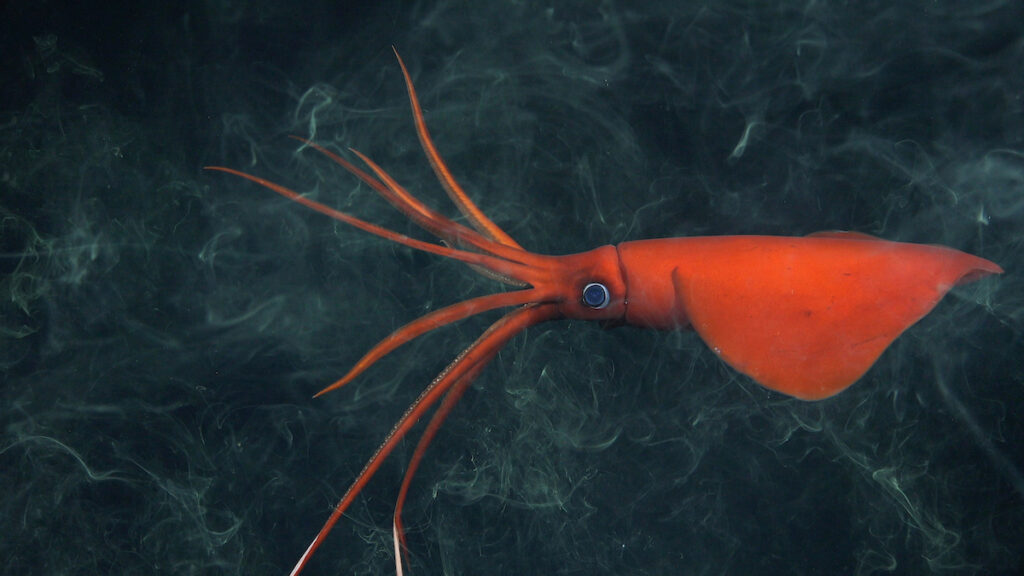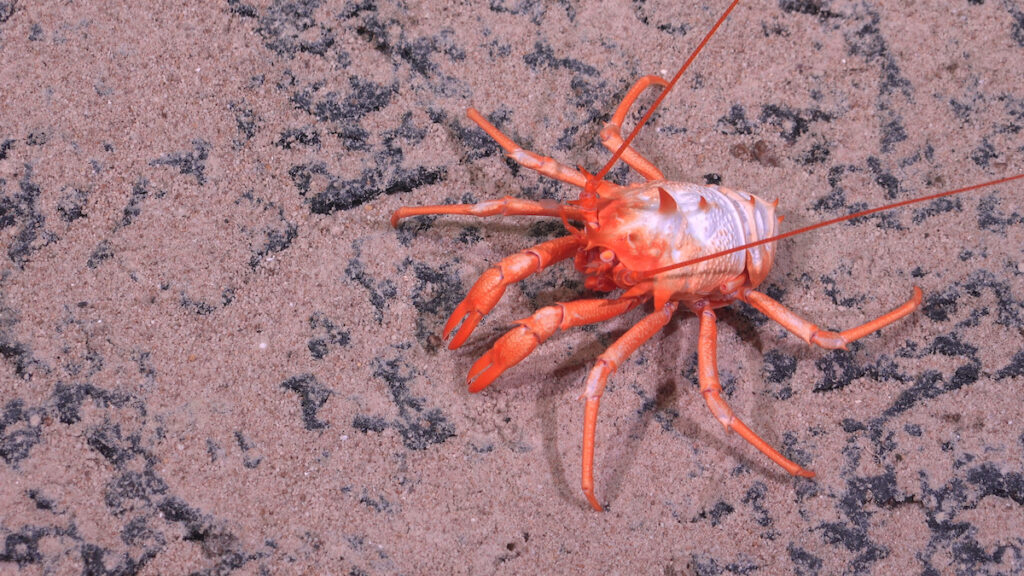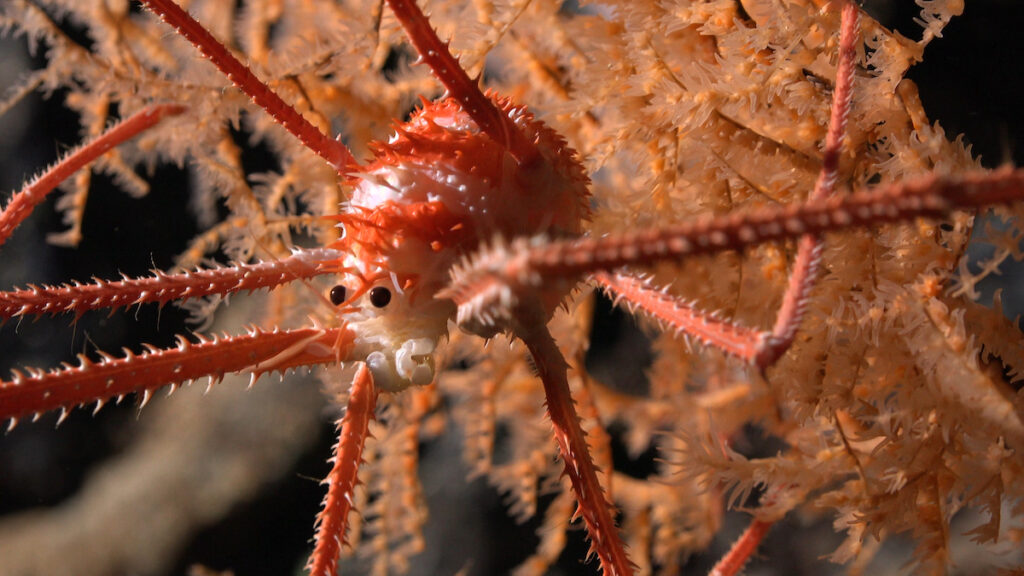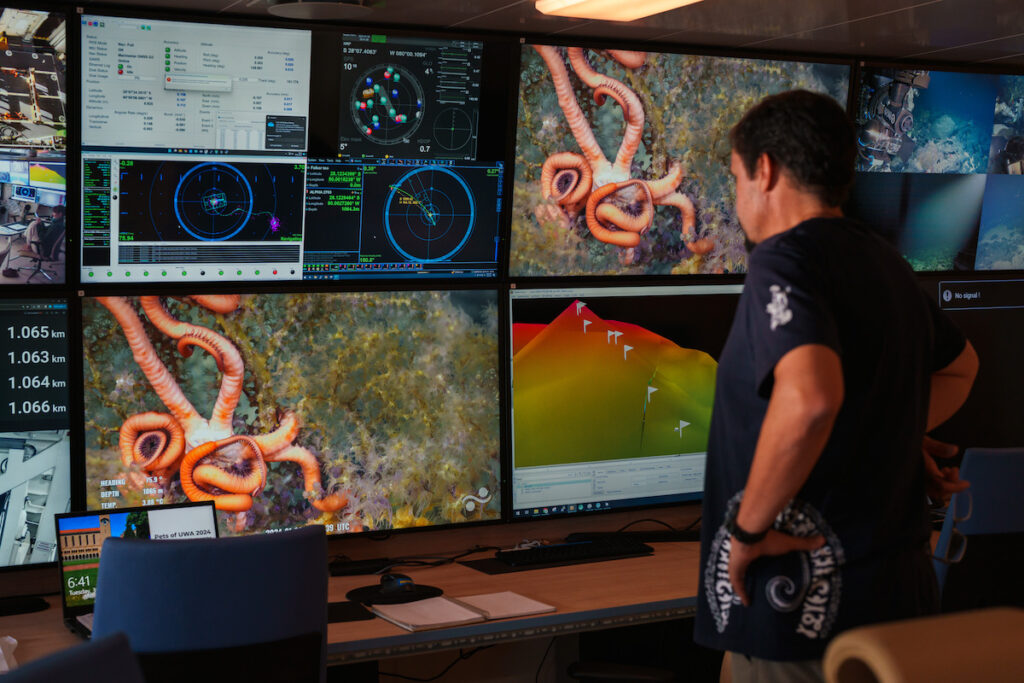100+ New Species Discovered in the Deep Sea
A recent expedition explored underwater mountains off the coast of Chile

If you need proof that there is still plenty to discover in our ocean, look no further than the recent deep-sea expedition in South America.
In January 2024, a group of scientists boarded Schmidt Ocean Institute’s research vessel Falkor (too) to explore underwater mountain ranges off of Chile’s coast. The team, led by Dr. Javier Sellanes of the Universidad Católica del Norte, wanted to understand the biodiversity of these little-explored seamounts. They used cutting-edge technology like remotely-operated vehicles, multibeam sonar and other sensors to get a comprehensive look at life on a seamount.
Never Miss An Update
Sign up for Ocean Conservancy text messages today.
The results were astounding. In less than a month, the expedition had documented 100 newly discovered deep sea animals, including species of deep-sea corals, glass sponges, squat lobsters and more. Additionally, they documented dumbo octopuses, siphonophores and jellies—it was an all-star lineup of some of the deep sea’s most captivating residents.
This expedition targeted a 2,900 square kilometer stretch of mountains created through volcanic activity. The area’s unique combination of currents and a nearby low-oxygen zone mean this particular stretch is somewhat isolated, resulting in very high levels of endemism—meaning there are animals here that aren’t found anywhere else on the planet. In fact, about half of the animals in this deep sea region are endemic.

Many of the dives took place in a marine protected area roughly the size of Italy. The team collected samples and data from ten seamounts at depths of up to 4,500 meters. They also used underwater mapping technology to record more than 52,000 square kilometers of ocean floor, and in the process, discovered four new seamounts.

According to Sellanes, their results “far exceeded” their hopes for the expedition. “You always expect to find new species in these remote and poorly explored areas, but the amount we found, especially for some groups like sponges, is mind-blowing,” he said.

Next, the scientists and their partners will be hard at work using genetics and other methods to officially identify the observed species. Another expedition is already underway to continue to explore this region—follow along in real time with Schmidt Ocean Institute’s YouTube channel.
We’re only beginning to scratch the surface of all there is to discover in the deep sea. It’s up to us to make sure the deep sea—and the rest of the ocean—is healthy to preserve these incredible communities. See how you can take action with Ocean Conservancy to protect our ocean from threats like climate change, plastic pollution and more in our Action Center.
